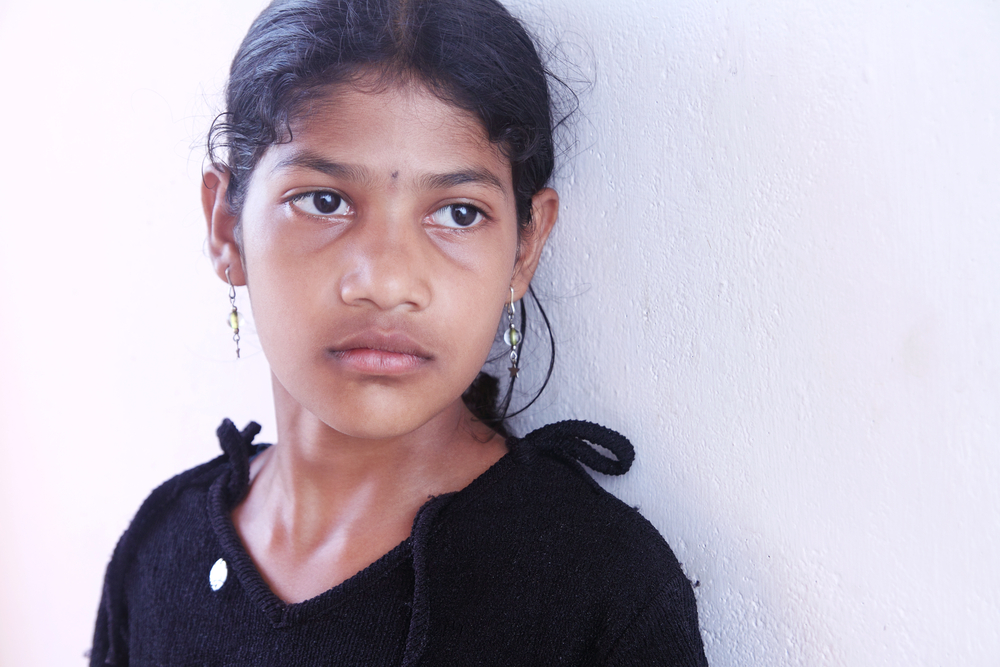
Self-disclosure refers to the ability to communicate and share intimate personal feelings and experiences (Cozby, 1973; Jourard, Lasakow & Lasakow, 1958). It is conducted increasingly through online social networking in addition to ‘offline’ behaviours (Vijayakumar & Pfeifer, 2020). It can take the form of verbal or written emotional expression whereby emotional experiences are articulated into words and communicated to others via written or spoken channels (Berry & Pennebaker, 1998).
Studies have documented both benefits and potential harms of ‘coming out’ or disclosing personal experiences of mental health problems. Positive impacts for the ‘disclosers’ (those who share) include reduced self-stigma (Corrigan, 2012; Corrigan et al., 2016; Goodwin et al., 2021), improved quality of life and personal empowerment (Corrigan & Shapiro, 2010) and enhanced social support (Bos et al., 2009). Self-disclosure impacts can also be understood from the perspective of ‘recipients’ (those who receive personally disclosed information from others). Knowing someone or having contact with someone with a mental health problem has been shown to help reduce stigma and promote help-seeking among recipients (Corrigan, 2012; Thornicroft et al., 2016; Yanos et al., 2015).
Amidst ongoing global debates on social media impacts on mental health (Naslund, Bondre & Torous, 2020; O’Reilly et al., 2018; Ulvi et al., 2022), especially for young people, it is becoming crucial to assess how social media affects mental health disclosure as well as how it could be leveraged to achieve positive outcomes and mitigate or avoid adverse effects.

Self-disclosure refers to the ability to communicate and share intimate personal feelings and experiences. This review explores the relationship between self-disclosure and wellbeing.
Methods
Luo et al., (2020) synthesised recent research on the motivations, mechanisms, and effects of self-disclosure on well-being to help describe and explain the relationship between self-disclosure and well-being.
Results
Their review proposes a two-process model that emphasises distinct mechanisms and motivations for how social media can affect psychological well-being, and how people’s well-being can influence self-disclosure production.
How self-disclosure affects wellbeing
Four prominent mechanisms which may account for the effects of self-disclosure on well-being were identified:
1. Perceived connectedness
Feelings of relatedness or belongingness with one another can positively impact well-being, while social exclusion and isolation have negative impacts on well-being.
2. Social support
Perceived social support (e.g., emotional, informational or instrumental help people perceive, express or gain) from one’s social media networks can improve online social well-being and even reduce depression and loneliness.
3. Capitalisation
The ‘capitalisation’ process suggests that expressing personal thoughts or emotions have additional effects on well-being because it increases the significance of the events shared, and allows people to rearrange their memories about the events during the course of expression. Given the ‘positivity norm’ of Internet culture, positive disclosures often occur more frequently and predict positive feedback and more social support. However, negative disclosure may discourage others from providing public responses and can lead to a sense of ostracism which is detrimental to overall well-being.
4. Authenticity
Psychological authenticity occurs when people feel more able to express their true self. Social media affords selective self-presentation. Accurate and genuine disclosure has been shown to predict greater perceived social support and enacted support from others, both of which are positive contributors to well-being.
How well-being affects self-disclosure
The authors found that people higher and lower in psychological well-being vary in their disclosure productions due to their particular disclosure motives and psychological needs. They found that the motivation to disclose may lie on a ‘intrapersonal- interpersonal continuum’, with relational development on the interpersonal end and self-expression and identity clarification on the intrapersonal end.
1. Interpersonal motives related to relational development
Disclosure driven by relational development can increase relational intimacy and closeness with others. This motive tends to be associated with more frequent self-disclosure in social media, and predicts more intentional, positive, and honest disclosure. Further, the authors suggest this might be more prominent among people with psychological distress. For example, they found that lonely or socially anxious people were more willing to disclose on social media than non-anxious people.
2. Intrapersonal motives related to self-expression
Higher levels of stress may trigger greater amounts of self-disclosure in social media. A possible reason may be that people low in self-esteem perceive social media as a safer medium for self-expression. Further, people low in psychological distress tended to disclose more positively.
The authors also found that it may be difficult for distressed individuals to benefit from self-disclosure on social media and that negative disclosure from psychologically distressed people may be less effective at obtaining social support or feedback than positive disclosure. It is worth noting that they found that certain affordances of social media may disrupt this spiral and lead to improved well-being. For example, negative disclosure via private messaging may be more likely to receive responses than public status updates; online forums which allow people to use anonymous accounts reduced senders’ perceived vulnerability of stigmatised content which may encourage more honest disclosure.

People higher and lower in psychological well-being vary in their disclosures on social media due to their motives and psychological needs.
Conclusions
This review proposes a framework describing a bidirectional relationship between self-disclosure and well-being i.e., how self-disclosure affects well-being and how well-being states influence disclosure motivations.

This review suggests that there is a two-way relationship between self-disclosure and wellbeing. Social media adds extra complexity to the picture.
Strengths and limitations
A key strength of this review is that it adds to the scant literature on the relationship between self-disclosure on social media and mental health, while also synthesising insights on underlying motivations and mechanisms.
Limitations of this review relate to the search methodology and generalisability of findings. The search methods are not described in this review, so it is difficult to assess how comprehensive or systematic the search for research articles included was. Further, the review does not include details about findings from different kinds of studies or for specific contexts (such as different social media platforms) or for different population groups (by age group, gender, geographical or income settings) or mental health outcomes. Nevertheless, this review addresses an important and less explored question about the relationship between self-disclosure and social media while also making recommendations for future research questions.

The search methods are not described in this review, so it is difficult to assess how comprehensive or systematic the search for research articles included was.
Implications for research and practice
This review suggests that it may be difficult for distressed individuals to benefit from self-disclosure when using social media. However, specific features of how disclosures are made on social media may lead to improvements in wellbeing; especially ensuring privacy and anonymity to disclosers.
It is of clinical importance for future research to examine how individuals suffering from distress disclose about themselves, and whether their disclosures can offer psychological resources that close the disclosure-well-being loop on social media.

Ensuring privacy and anonymity to disclosers may lead to greater association of self-disclosure with wellbeing.
Our review: self-disclosure as an active ingredient in interventions for youth anxiety and depression
While the review conducted by Luo et.al. indicated some potential benefits and harms for those engaging with self-disclosures about mental health problems on social media, a more comprehensive topic review was missing which examined additional contexts for self-disclosure and the impacts of self-disclosure for the discloser as well as the recipient. This inspired our review that has a population focus on young people with lived experience of anxiety and/or depression and builds on our team’s prior work on narrative participatory approaches in youth mental health (Gonsalves et al., 2019).
We conducted a systematic review and lived experience synthesis of self-disclosure as an active ingredient in interventions for youth anxiety and depression. The effects of self-disclosure on common youth mental health problems have been less commonly studied and we wanted to generate a comprehensive evidence synthesis of self-disclosure interventions involving young people aged 14-24 years who are either disclosers or recipients of personal information about living with anxiety and/or depression.
For this review, we worked with a lived experience panel that were involved in several stages of the project. The group helped to:
- Individually comment on the research methodology;
- Contribute through group discussion to the interpretation of findings;
- Work in smaller groups to conduct an online search of publicly accessible self-disclosure projects focused on or led by young people via online channels like websites, blogs, or social media and through multi-media or arts projects not covered in peer-reviewed literature.
We identified six studies which met our search criteria and were included in our review. These studies examined the outcomes and experiences of self-disclosure through videos or discussion-based exercises in schools, colleges, and clinics. Most were done for groups of young people. Two were led by youth with lived experiences of anxiety or depression, one was organised through teachers, one through counsellors, and one was self-directed and online.
Because we found relatively few studies, and they varied a lot, it is difficult to say with certainty whether self-disclosure is effective. However, our findings suggest that self-disclosure may be effective at reducing symptoms for youth with established depression; effects were not apparent when delivered as early prevention. We did not find evidence of impacts related to anxiety. The potential for negative effects like bullying was identified.
There was no clear evidence about which sub-groups might benefit more/less from self-disclosure interventions; however there was indirect evidence that higher distress levels may be associated with stronger intervention effects.
There was very little evidence about the impacts of self-disclosure in different contexts and no included studies in this review made comparisons of interventions with different contextual features.
No studies explicitly examined mechanisms of self-disclosure. The youth panel however suggested several pathways through which self-disclosure may impact outcomes including by reducing social isolation; offering an important outlet for both making sense of and expressing difficult thoughts or feelings, as well as helping to identify potential options to solve stressful problems which may help with resolving stressors that in turn affect depression and anxiety. The role of stigma reduction as part of the disclosure process in facilitating help-seeking was also recognised.
The research findings and lived experience panel synthesis showed that self-disclosure interventions can be effective for youth with depression when delivered online or in person in groups in supervised settings. Findings also highlight the role that lived experiences of depression and anxiety can play in programme contents as well as delivery via lived experience facilitators.
Self-disclosure could offer helpful therapeutic interventions for depression, especially for those with elevated symptoms. It may also be helpful for reducing stigma (and possibly stimulating help-seeking) at earlier stages of mental health problems. Delivery by non-specialists (such as peers and teachers) can help build capacity in community health systems.
More research is needed with different groups of young people across different age groups; genders; contexts such as educational settings or online and in more diverse contexts including low-and-middle-income settings and with different delivery agents including non-specialists such as youth with lived experience. Research on the effects and underpinning mechanisms of self-disclosure is also needed.

Self-disclosure may be of value in the context of interventions intended explicitly to reduce depression for adolescents or youth already showing symptoms.
Statement of interests
There are no conflicts of interest for the author in writing this article.
Links
Primary paper
Luo, M. and J.T. Hancock, Self-disclosure and social media: motivations, mechanisms and psychological well-being. Curr Opin Psychol, 2020. 31: p. 110-115.
Other references
Berry, D.S. and J.W. Pennebaker, Nonverbal and verbal emotional expression and health. Handbook of psychosomatic medicine. 1998, Madison, CT, US: International Universities Press, Inc. 69-83.
Bos, A.E.R., et al., Mental Illness Stigma and Disclosure: Consequences of Coming out of the Closet. Issues in Mental Health Nursing, 2009. 30(8): p. 509-513.
Corrigan, P.W., Where is the evidence supporting public service announcements to eliminate mental illness stigma? Psychiatr Serv, 2012. 63(1): p. 79-82.
Corrigan, P.W. and J.R. Shapiro, Measuring the impact of programs that challenge the public stigma of mental illness. Clinical Psychology Review, 2010. 30(8): p. 907-922.
Corrigan, P.W., et al., Who comes out with their mental illness and how does it help? The Journal of nervous and mental disease, 2016. 204(3): p. 163-168.
Cozby, P.C., Self-disclosure: a literature review. Psychol Bull, 1973. 79(2): p. 73-91.
Gonsalves PP, Hodgson ES, Michelson D, et al. What are young Indians saying about mental health? A content analysis of blogs on the It’s Ok To Talk website. BMJ Open 2019
Goodwin, J., et al., The use of film-based interventions in adolescent mental health education: A systematic review. Journal of Psychiatric Research, 2021. 137: p. 158-172.
Jourard Sm Fau – Lasakow, P. and P. Lasakow, Some factors in self-disclosure. (0021-843X (Print) 1958).
Naslund, J.A., Bondre, A., Torous, J. et al. Social Media and Mental Health: Benefits, Risks, and Opportunities for Research and Practice. J. technol. behav. sci. 5, 245–257 (2020).
O’Reilly M, Dogra N, Whiteman N, Hughes J, Eruyar S, Reilly P. Is social media bad for mental health and wellbeing? Exploring the perspectives of adolescents. Clinical Child Psychology and Psychiatry. 2018;23(4):601-613. doi:10.1177/1359104518775154
Thornicroft, G., et al., Evidence for effective interventions to reduce mental-health-related stigma and discrimination. Lancet, 2016. 387(10023): p. 1123-1132.
Ulvi O, Karamehic-Muratovic A, Baghbanzadeh M, et al. Social Media Use and Mental Health: A Global Analysis. Epidemiologia 2022;3:11–25. doi:10.3390/epidemiologia3010002
Vijayakumar, N. and J.H. Pfeifer, Self-disclosure during adolescence: exploring the means, targets, and types of personal exchanges. Curr Opin Psychol, 2020. 31: p. 135-140.
Yanos, P.T., et al., Interventions targeting mental health self-stigma: A review and comparison. Psychiatr Rehabil J, 2015. 38(2): p. 171-178.
Photo credits
- Photo by Priscilla Du Preez on Unsplash
- Photo by Oleg Laptev on Unsplash
- Photo by Jeremy Bezanger on Unsplash
- Photo by Susan Q Yin on Unsplash
- Photo by Markus Winkler on Unsplash
- Photo by Chris Yang on Unsplash
